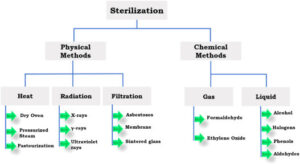The next several entries on our blog will feature cross-posts from various online discussions. The answers to each of the questions were developed by one of our sterilization experts.
Q: What is the impact of maximum density variation when a mixed load is validated for ethylene oxide sterilization?
A: The criteria for determining a worst case load is not just the load density, but also the absorption of the load (i.e. EO, heat, & humidity). Also, the most dense load, or the most absorbative load, may not be the worst case. This means that one may need to consider if testing the extremes of each of these two factors is warranted. There is theoretically no limit on the density variation for a mixed load to be qualified. However, in practice, loads with significant differences in density (and/or absorption) should be evaluated for consideration of separate sterilization families. In addition, there may be a difference between what constitutes a worst case load, and what product is the most difficult to sterilize as the criteria to determine each of these factors is different. A proper qualification needs to include the worst case load, along with the worst case product. In addition, this applies regardless of whether the sterilization is performed in-house or at a contract sterilizer.



